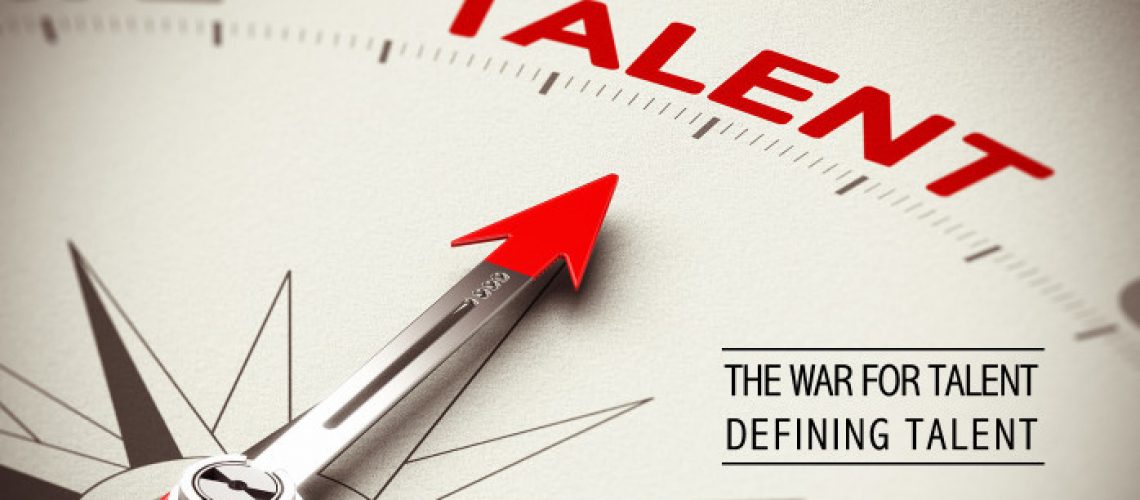We are all familiar with the “War on Terror” – a metaphor for the international campaign in the aftermath of the September 11 attacks on the United States. In terms of the time, energy, money and resources devoted to the conflict over the years, the “War for Talent” runs a close second.
The concept of a “War for Talent” was first used in 1997 by global consulting firm McKinsey & Co. to describe the increasingly competitive landscape for attracting, developing and retaining talented personnel. The key message is:
The success of any endeavour is determined by the quality of the people involved
If talent, or talented people, is the commodity being fought over, then it makes sense to have a clear definition of what ‘talent’ actually is. There is a lot of talk about talent, but very few practical and robust definitions that actually agree with what the science tells us to be true.
Tomas Chamorro-Premuzic is CEO of Hogan Assessments, a leading provider of psychometric and personality-profiling tools used by some of the world’s best performing organisations, teams and individuals. He offers four useful heuristics or shortcuts to easily identify talent:
1. The Law of the Vital Few
The Pareto Principle (known as the 80-20 rule) states that for many events roughly 80% of the effects come from 20% of the causes. Vilfredi Pareto found that in any collective system, be it human beings, animals (or even plants), when you measure output or performance you often find this 80-20 distribution. He first discovered the theory by looking at optimal planting practices in his garden, then later discovered its use in predicting the distribution of land and wealth in Italy.
In a business context we often see the 80-20 rule at work. For example, 80% of the profits come from only 20% of customers or 20% of the product range.
Whether it’s a large company like Apple or a small consulting business, the Pareto principle also applies to the people (or talent) involved. Often in any organisation, large or small, public or private, 80% of productivity or output is generated by only 20% of the people (or the vital few).
It is worth noting that the Law of the Vital Few also holds true in the negative. Often 20% of the people account for most of the issues – 20% of the personalities and counter-productive work behaviours give rise to over 80% of the problems.
2. The Past Performance Principle
Product disclosure statements for financial investments will often warn us that, ‘past performance is not an accurate predictor of future returns’. However, when it comes to predicting people performance the opposite has been proven empirically to hold true. As it turns out, past behaviour is a very reliable predictor of future behaviour or performance.
Talent can be understood in terms of ‘the best’ an individual is capable of. Talent is not only a measure or estimate of potential, but the peak or maximum level of performance a person can achieve.
If in the past, an individual performs better in a given function or role (relative to their peers), it implies that not only were they more talented at the time, but there is also a strong likelihood they will perform again in the future.
3. Effortless performance
Dr Green and John LeMay examine the concept of peak performance in their book Effortless Performance, as it relates to athletes, musicians, artists or anyone mastering a precision skill. They bust the myth that peak performers get to the top by simply working harder and forcing the development of a skill.
Practice does not make perfect – perfect practice makes perfect!
Compare two individuals who generate the same output or perform equally, but the second took less effort to do so. If they achieve the same result, you can conclude that the second individual who used less effort must therefore be the more talented of the two.
If the ingredients for success in an endeavour are ability (talent) and effort (motivation), the more talented individuals require less effort to achieve the same result.
Think of two marathon runners (of the exact height and weight) who run the same time in the London Marathon. However, one uses fewer calories (or less effort) to do so. You can conclude that one must therefore be more talented than the other.
It also follows that if the more talented individual were to try harder (or put more effort in), then they would perform even better.
In a work context, talented people need less time to get up to speed, are more trainable and require less effort from the organisation (time, resources, development) to achieve the same results.
4. Personality in the right place
Attributed to Roman philosopher Seneca, and revamped by Oprah Winfrey, “Luck is what happens when preparation meets opportunity”.
Talent in this context assumes the right person (or personality) is in the right place at the right time.
Tomas Chamorro-Premuzic (CEO of Hogan Assessments) is often asked whether an individual’s personality (or profile) is ‘good’ or ‘bad’ – to which he answers, “It depends”. The situation is often a bigger determinant of performance than the personality involved. For example, he suggests the success of Kim Kardashian and other modern day celebrities shows what might happen when the right personality finds the right situation (or niche), at the right time.
Others have long argued the same holds true for historical greats like Abraham Lincoln, Winston Churchill and Martin Luther King. All products of their situation, that managed to come to define the spirit of the age in which they lived.
As Shakespeare said, “Some are born great, some achieve greatness, and some have greatness thrust upon them.”
These four shortcuts help to identify talent. You can rely on any one in isolation, and in some cases all four will apply. Chamorro-Premuzic uses the Argentinian soccer player Lionel Messi, as an example of when all the pieces come together.
Despite being part of one of the most successful club teams of all time (Barcelona), Lionel Messi accounts for over 80% of the goals, assists, critical set pieces, etc. Further, despite being surrounded by other great stars of the game, Messi remains an example of the vital few, the key individual.
Messi’s maximum performance is also incredible. Where most soccer players have YouTube clips to showcase the top five goals of their career – Messi has a top 50. His 49th ranked goal is also better than most of the other players’ number ones!
Messi also typifies the concept of effortless performance and his stats are too numerous to mention. He’s clocked up over 630 appearances (over 500 at club level and over 100 internationally), scored over 500 goals and helped with over 200 assists. At 29 years of age he has only just quit international football, yet looks to remain involved at club level for many years to come.
Finally, the talent that is Lionel Messi supports the idea of ‘personality in the right place’. Messi wouldn’t be any good at your job or mine. He couldn’t reproduce his performance as the CEO of Apple either. Messi couldn’t even reproduce his peak performance when playing for his home country of Argentina. Only in club contests, with Barcelona, with those teammates, and at this time, is Messi able to replicate his amazing performance.
Messi is a wonderful example of these four heuristics coming together and clearly identifying a great talent. And perhaps great leverage for the agent who negotiated a €36 million salary in 2016!




